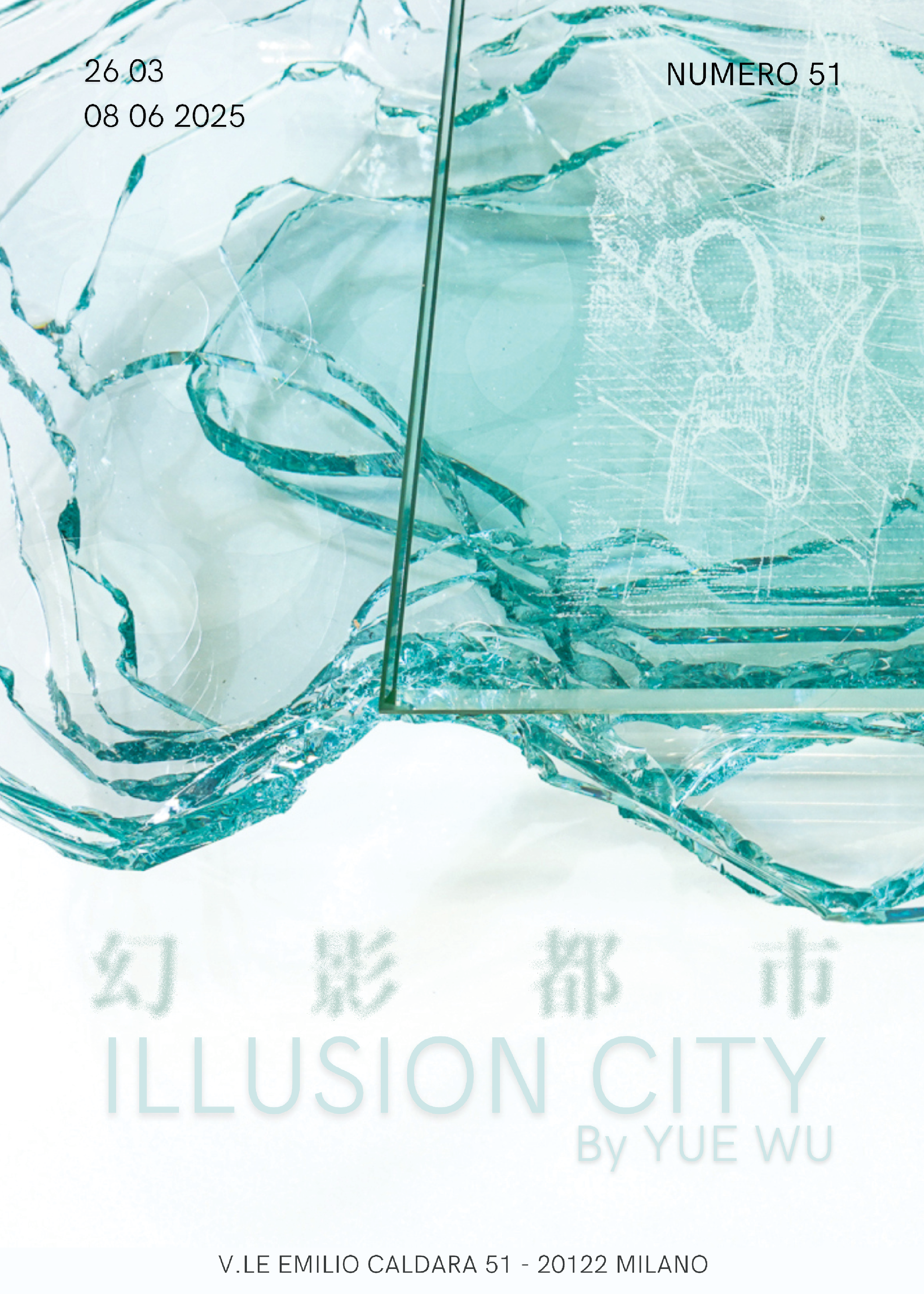2025
26.3 - 08.06
Wu Yue, the third-generation heir to the Wuzixiong Glass Art Museum in Taizhou (Zhejiang, China), has been showcasing his glass-engraving skill across various cultural and artistic centers from an early age in China and internationally. Growing up in different cities and countries, he absorbed the essence of these places, weaving both joyful and challenging moments into his artistic journey.
Wu Yue was first introduced to the art of glass engraving by his grandfather in Taizhou, where he learned and refined his skills. Later, traveling alongside his father, he contributed to preserving and promoting this tradition before moving to Paris to deepen his artistic studies. In the French capital, he encountered contemporary art, leading him to establish his own studio in 2017. Expanding beyond traditional craftsmanship, he began exploring personal memories, blending various techniques and media to capture the fragmented nature of human experience.
In 2024, Yue exhibited his work "The Nine Dragons Plate" at the group show held at Palazzo Loredan during the Venice Glass Week HUB under 35. On this occasion, he was awarded the Autonoma Residency Prize, granting him the opportunity to undertake an artistic residency at the Pilchuck Glass School in Seattle (USA) in 2025. On behalf of Laguna~B, promoter of the Prize, Marcantonio Brandolini D’Adda commented that “Often, the nine Dragons were embroidered in emperors’ robes, engraved in weapons and architecture. Yue Wu has succeeded in recreating this ancient and powerful scene on a crystal disc, The Nine Dragons Plate. The extraordinary translucent carving technique blurs the notion of time and takes us back through the centuries, and the beauty of this work leaves the viewer speechless.”
This experience further propelled Yue to integrate traditional glass engraving with his contemporary artistic research, expanding his work beyond glass, integrating elements such as anthropomorphic kites crafted from diverse materials, symbols of human life's maneuverability and instability, into his work. His research also extends to monumental sculptures that encapsulate personal and collective memory, weaving together photographs from his travels, portraits, and images from his family archive into a cohesive narrative.
The figure of the giant frequently recurs in Yue’s exploration, an immense, solitary entity often perceived as an outcast or an obstacle in the structured human-social order. In his vision, this figure, while fundamentally human, sometimes dissolves into architectural elements such as walls, as seen in MUR, becoming a barrier that both isolates and protects its inner world. In other instances, it serves as a vessel for memories, as in EVER, an anthropomorphic giant imbued with reinterpreted recollections.
With this exhibition, Wu Yue embarks on a new chapter, bridging his past with the present. Step into his Illusion City, wander through this glass-formed world and discover connections between memory and imagination.


